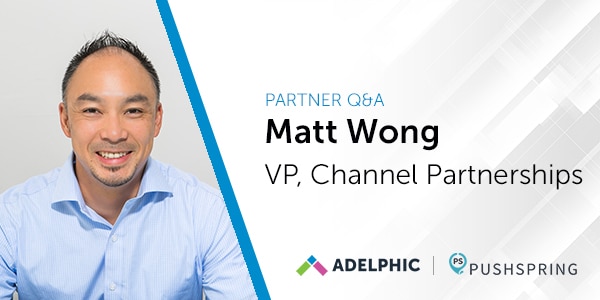Q&A: How Marketers Can Leverage Mobile App Data

Our Q&A series shines a spotlight on the biggest challenges, questions and trends in the programmatic marketplace with commentary from industry experts, clients and partners.
Today’s Q&A is with Matt Wong, VP of Channel Partnerships at PushSpring, a leading provider of data and insights for verified iOS and Android mobile app audiences. In his position, Wong is charged with helping clients effectively understand and leverage PushSpring’s offerings.
Q: Marketers know it’s important to reach audiences across all of their devices, but how essential is it to reach users specifically within their mobile apps?
We recommend that all campaigns be run across devices to message users within the media they consume most – mobile applications being an important part of this mix, given they comprise more than 90% of our time on mobile devices, according to eMarketer.
Q: What can be learned from understanding which mobile apps users are downloading?
Installed applications tell us a lot about a user’s interests, hobbies and attributes.
Apps can be highly personal and reflect interests or associations not easily found in other data sets without PII or registration data. One’s travel loyalties, retail and entertainment preferences or frequent hobbies are a few items easily identified through applications.
For instance, if a device has a specific airline app installed, the owner is extremely likely to have flown that airline or be a member of the airline’s loyalty program. There are also “archetypal” apps, which one would only have installed on their device if involved with a particular activity or life stage. An example would be a pregnancy tracker, with the logical assumption being that a user would only download this app if actually planning for or expecting a child.
Q: How should that information influence media buys?
Apps tell us a lot about their users and ownership information should be used as part of the media planning process. The ability to target based on one’s preferences or interests is extremely compelling and acts as a definitive attribute to qualify users into a particular audience.
For planning purposes, we recommend understanding the life stage and additional interests or related categories of a user, which would qualify them for a particular audience. Conquesting a competitive brand’s mobile application is often the immediate opportunity that comes to mind for marketers. However, while that is one tactic to use, it’s not the only effective option for the campaign.
Think about an insurance provider who is looking to gain new users. It would be easy to create an audience targeting competitive insurance providers, but how often does one really switch insurance companies? If this is the only audience on your plan, there’s a high likelihood you won’t attain the results you’re looking for. Instead we recommend also using life stages – for instance, targeting devices with apps that indicate life changes such as engagement or marriage, having a child or buying a house, which are all activities that might encourage someone to review their insurance needs and seek a new provider.
Q: What is unique about PushSpring’s partnership with Viant’s DSP?
Viant and PushSpring’s partnership allows for custom audience creation with seamless media execution. The ability to create custom segments leveraging the PushSpring Audience Marketplace and easily execute across Viants platform (potentially adding additional layers of targeting) gives advertisers a unique way to leverage two best-in-class platforms with transparent, custom data and media options.
Q: As we look ahead to 2019 and beyond, what do you see as the biggest upcoming developments or trends for data?
First: leveraging first-party data
While not necessarily new, I’m very excited about the ongoing investment that advertisers, marketers and brands are making to incorporate first-party data into their marketing efforts. Leveraging CRM/first-party data alongside best-in-class third-party data provides broader options for segment creation and leveraging a brand’s organic customer base, allowing more intelligent engagement with all types of customers.
We also expect to see various types of look-a-like models being created from CRM seed data, with the objective of acquiring new customers who “look like” current ones, and building segments from unique seed sets to compare tactics.
Second: all the data…
People are complicated. We’re multi-dimensional, have various interests and all act individually. This complexity has affected the way advertisers think about identifying audiences, as using one targeting tactic isn’t always as impactful as leveraging multiple data types, and accounting for individual preferences or differences. For any advertiser, finding audiences that are both targeted and scalable is a constant balancing act. At PushSpring, we see an increasing number of advertisers leveraging multiple types of data instead of limiting themselves to just one data source. The ability to combine different targeting tactics allows true scale while maintaining the integrity of the desired audience.
STAY IN THE LOOP WITH OUR NEWSLETTER
Sign up to get Viant news and announcements delivered straight to your inbox.
Sign up to get Viant news and announcements delivered straight to your inbox.
